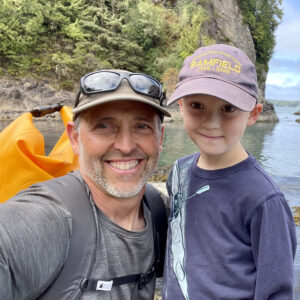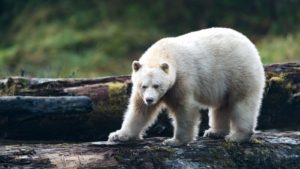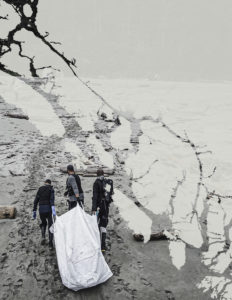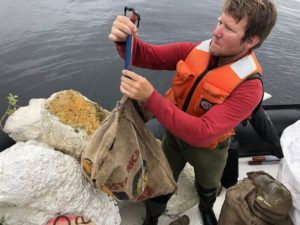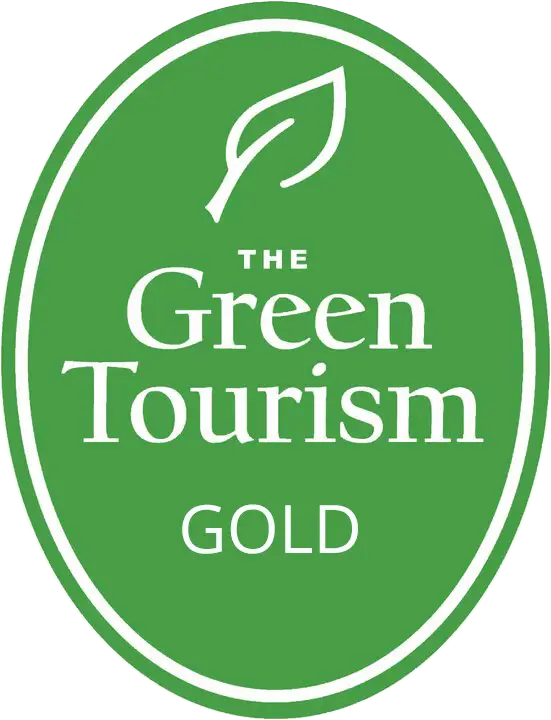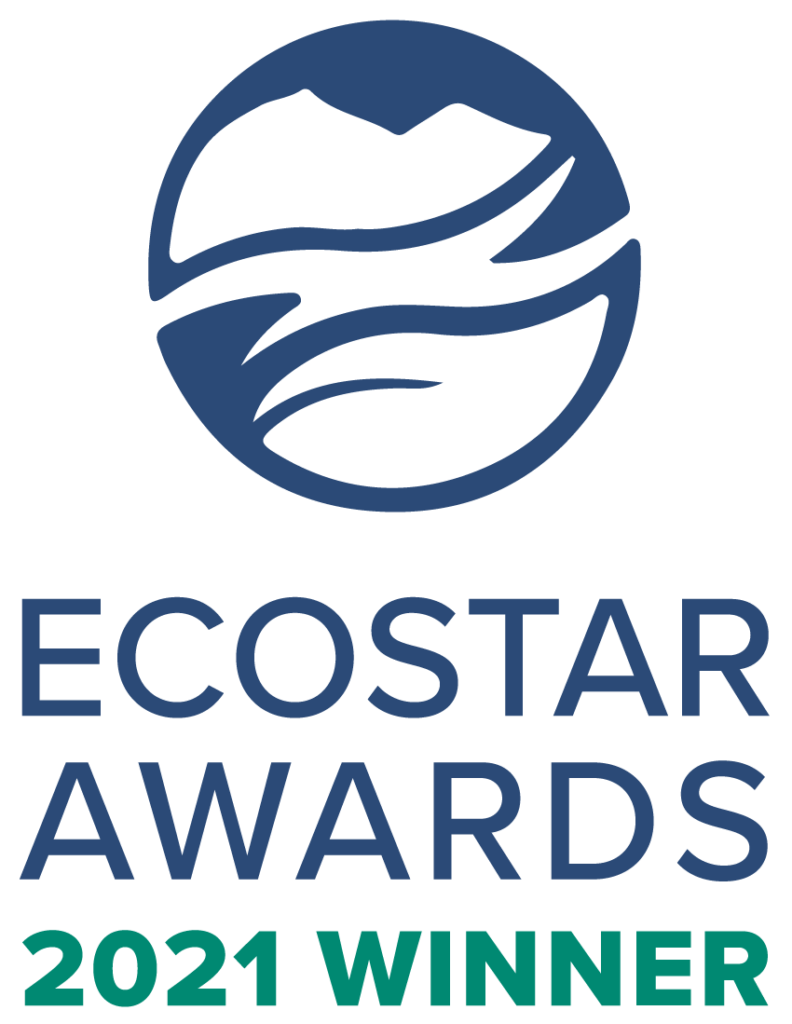I recently lived a personal dream come true – spending nearly two weeks with my family, including our seven-year-old son and my niece and nephew, exploring, sharing, and experiencing the wonders of the Great Bear Rainforest while living and traveling aboard our classic wooden schooner, Passing Cloud. Over the past two decades I’ve had the privilege of guiding guests from all over the world to this incredible region. Yet, it still remains difficult to articulate just what makes this such an incredible corner of the planet – this was my opportunity to show my family for themselves, as well as where I go and what I do when I’m leading expeditions in this region. And perhaps more importantly, why.
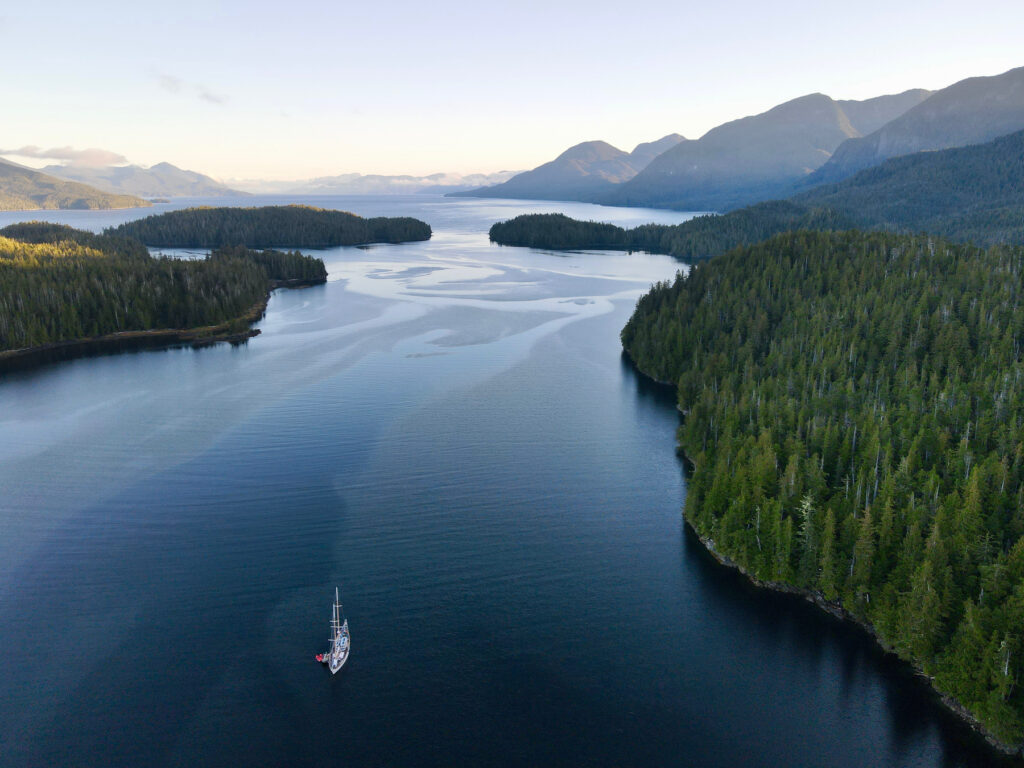
Following a long day during which we crossed Hecate Strait from the Haida Gwaii Archipelago to the BC coast mainland (approximately 80 nautical miles, or 150 km), we awoke in a remote outer coast anchorage to the prehistoric calls of sandhill cranes, as if being welcomed to this magical region now known as the Great Bear Rainforest. Shortly after, a lone wolf appeared on the nearby shoreline and, glued to our binoculars, we watched in hushed awe as this iconic predator searched the low intertidal zone for its next meal. Thrilled to have this brief glimpse into the daily life of this reclusive animal, we pondered the complex societies of coastal wolves (also known as “sea wolves”), and their intimate connections with and dependence upon, coastal habitats and resources. At the same time, something else was happening in our little anchorage – the mirror-like surface of the water was being broken by jumping and splashing Pacific salmon. Having spent the last four years growing and surviving the perils of the northeastern Pacific Ocean, these salmon were now returning to spawn (and die) in the very rivers and streams in which they were born, and where the marine nutrients accumulated in their bodies will feed an amazing range of consumers (including bears and wolves), and fuel the growth of the adjacent forests that support the stream habitat quality needed for both juvenile and adult salmon alike.
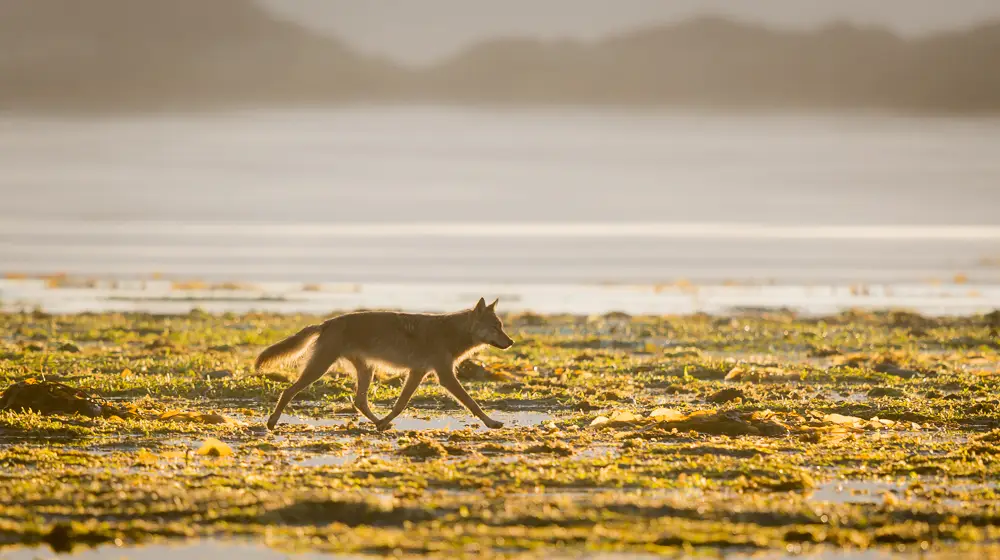
And our week went on like this. Walks through old-growth rainforests; salmon leaping up waterfalls on route to the furthest reaches of island ecosystems; massive schools of juvenile herring being consumed by seabirds and humpback whales; huge black rockfishes lingering under the cover of kelp forests; seals, sea lions, sea otters, and river otters simply living their lives in this coastal oasis; eagles crying and ravens chortling in small coastal estuaries; porpoises jockeying for position to ride the bow wave of our ship; matrilineal groups of both mammal-eating and salmon-eating killer whales (Orcas) navigating these waters and finding their prey using intimate ancestral knowledge; and grizzly bears pacing river banks in anxious anticipation for the arrival of the first salmon of the season. Not to mention enjoying sea kayaking, swimming, many wonderful meals, and treasured family time in general!
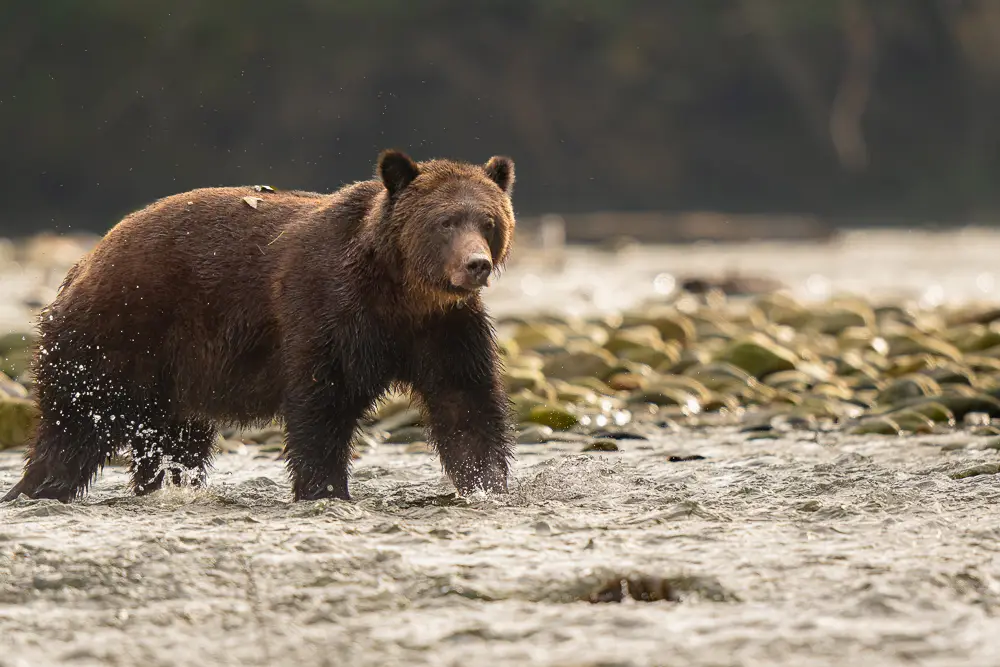
Stretching along Canada’s Pacific coast, from northern Vancouver Island to southeast Alaska, Canada’s Great Bear Rainforest encompasses some 64,000 square km and protects the largest remaining intact coastal temperate rainforest ecosystem on the Planet. Globally rare to begin with and estimated to comprise less than two percent of Canada’s forest ecosystems, coastal temperate rainforests are only found along continental coastal margins where fog, ocean currents, and high rainfall (in some places more than 5 metres/15 feet annually!) maintain cool year-round temperatures. As a result of its vast size, reaching from outer coast islands into the deep fiords of British Columbia’s Coastal Mountain range, the Great Bear Rainforest encompasses an incredible diversity of interconnected habitats, ecosystems, wildlife, and Indigenous cultures. Formally protected by the Great Bear Rainforest Agreement in 2016 via a mosaic of provincial parks and conservancies, and Indigenous Protected Areas, approximately 85% (or ~3.1 million hectares) of remote wilderness and old-growth forests are now permanently protected from industrial logging.
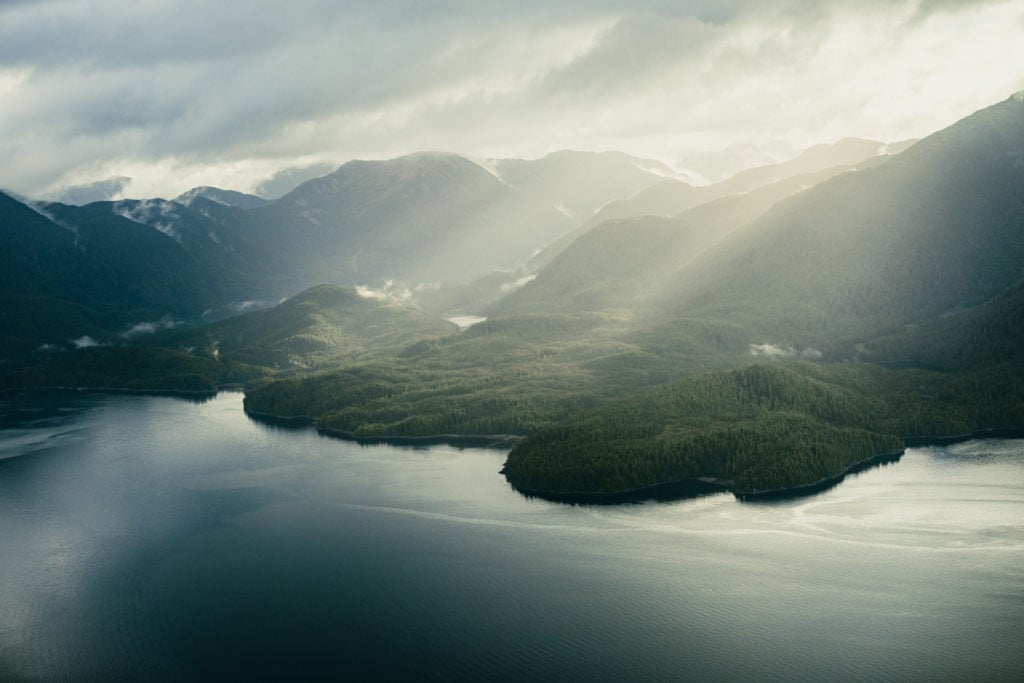
Of course, preceding the Great Bear Rainforest Agreement are the traditional territories of more than 17 First Nations who have lived throughout this region for at least the past 14,000 years, since the end of the last ice age and the retreat of glaciers that shaped this remarkably complex coastline. The Great Bear Rainforest Agreement entrenched First Nations’ rights to share in decision-making processes concerning their traditional territories, and these Nations now play central roles in the conservation, stewardship, and restoration of natural resources throughout their ancestral lands. At the same time, First Nations here and throughout Canada continue to navigate Reconciliation and the far-reaching legacies of colonization and residential schools.
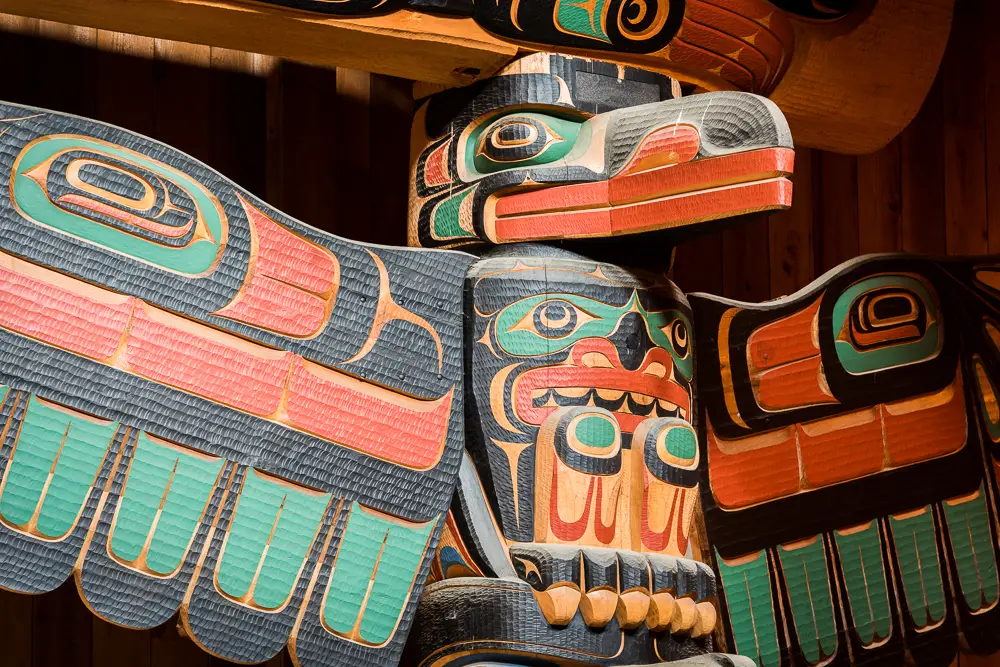
And while the Great Bear Rainforest is an intact and functioning network of diverse ecosystems, it doesn’t exist in a bubble. Rather, it’s subject to many of the same global perils that the world is currently experiencing, including rising ocean temperatures, heat domes, forest fires, ocean acidification and hypoxia, marine debris and micro-plastics, overfishing, hunting, invasive species, and shipping traffic, to name a few. Perhaps most alarming are the widespread declines of wild Pacific salmon, throughout their range, from California to Alaska. But at the same time, success stories abound and numerous examples provide both inspiration and guidance. Over the past decades, following the end of exploitation, grey whales, humpback whales, elephant seals, fur seals, and sea otters, have all made remarkable recoveries. The recent end of grizzly bear trophy hunting in 2017 is already having widespread benefits to grizzly bear populations, and is supporting development of conservation-based economies that include sustainable bear viewing and ecotourism in general. Further, extensive bilateral and trilateral planning processes undertaken by federal, provincial, and First Nation governments have led to collaborative management of the Great Bear Rainforest that weaves Indigenous knowledge with western science to protect habitats and maintain cultural values at the same time as creating and preserving economic opportunities.
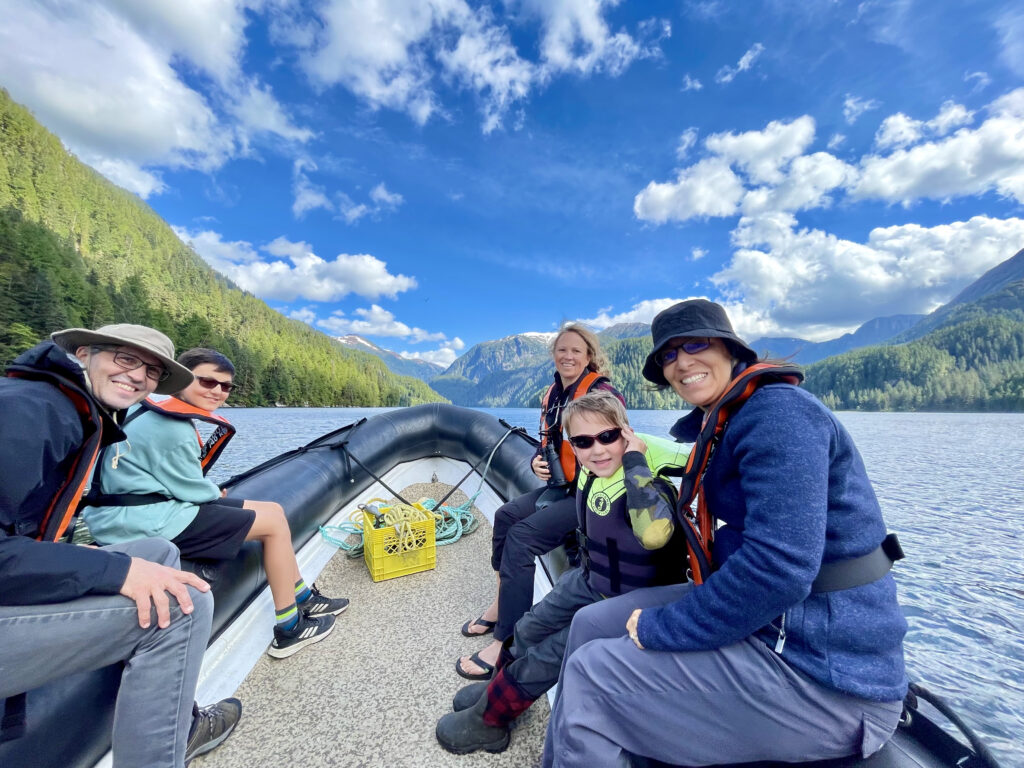
In short, there’s a lot going on in the Great Bear Rainforest, and our small-group expeditions aboard the Passing Cloud strive to provide first-hand experience and foster a deeper understanding of the incredible scale, ecological diversity, cultural complexity, natural wonder, and inspiration that the Great Bear Rainforest encompasses and instills. It’s my hope that our guests take home with them wonderful stories about their many encounters and adventures here, and a sense of stewardship that carries over into daily lives and decisions. And during my recent adventure here with my family, I was thrilled to be able to share this special place with them and witness the pure awe that so naturally results.
Dr. Russell Markel is the Founder, Owner, and Operator of Outer Shores Expeditions, and the Co-Owner of Outer Shores Lodge. For comments, questions, or further information please email Russell at [email protected]
Further Reading and Resources

